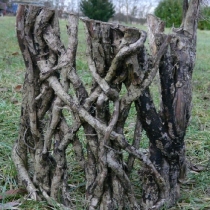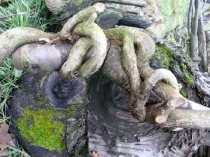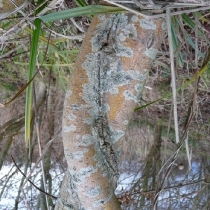Current Practice…
The fragment is chosen and trimmed to fit the dimensions of the kiln.
The head is firmly sunk into a thick damp sheet of clay. A thick clay wall encircles the fragment and all possible leaks are sealed with plastered scrim. Ground flint and water are hand-mixed together so a creamy emulsion is achieved. Pottery plaster is added and mixed in well until all the lumps are gone. Chopped fibres of glass are mixed in too so the whole mixture resembles porridge – as it begins to thicken and coat the back of a hand. The pour must immediately follow – the plaster will set very fast but will need a little longer to cure.
When the cure is complete, the walls of clay are removed – the mould is
very fragile so great care is always taken. The mould is baked -
incinerating the fragment to fine ash. The fragment must be wasted, the mould supported and the molten metal swiftly poured into the void. The released cast is surrounded with frills and crystals of pewter. Finishing is all that is left to do. That and the positioning – placing of the unfamiliar with and within the familiar…





